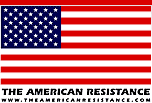Does CAFTA include a visa?
Articles
On June 30, 2005 the Central America Free Trade Agreement (CAFTA) passed the Senate by a 54-45 vote and soon the House will vote on it. If history is any guide, House members will put on a show with a heated public debate - and then they will vote in favor of it. Countries included in the agreement are Costa Rica, the Dominican Republic, El Salvador, Guatemala, Honduras, and Nicaragua
CAFTA's big secret, by Lou Dobbs, CNN, June 30, 2005
CAFTA: Ideology vs. national interests, by By Patrick J. Buchanan, WorldNetDaily.com, July 27, 2005
There goes the neighborhood, by Phyllis Spivey, NewsWithViews.com, July 22, 2005
Does CAFTA include a visa?, by Rob Sanchez, July 11, 2005
Will CAFTA Affect Immigration to the United States from Central America?, by NumbersUSA.com
CAFTA Squeaks by Senate, By Tiniest Margin Ever for Trade Bill in History
CAFTA: Exporting American Jobs & Industry, by William Norman Grigg, The New American, published on StopTheFTAA.org, April 18, 2005
Keystone to Convergence, by William Norman Grigg, The New American, published on StopCAFTA.org, April 18, 2005
U.S. Blocked Release of CAFTA Reports, by Assosiated Press, June 29, 2005
CAFTA undermines immigration laws, by Tom Tancredo, NCTimes.com, July 17, 2005
CAFTA includes over 1,000 pages of international law that will contain some ugly surprises for American labor. One thing conspicuously absent from CAFTA is any mention of embedded visas. (Other FTAs created visas like for instance NAFTA with the TN visa and the Singapore and Chile FTA with the H-1B1.) The absence of a visa in CAFTA is even more surprising considering that international trade agreements are intimately linked to immigration and the free flow of "natural persons" over borders, As Gary Endelman wrote, (refer to previous newsletter), "foreign trading partners are now demanding immigration concessions as the price of doing business with Uncle Sam."
One major question begs to be answered: how could the CAFTA signatories fail to get visa concessions from the United States in such a far-reaching trade agreement?
The answer isn't in what CAFTA explicitly says - it's what it doesn't say! Authors of CAFTA cleverly inserted text that allows an international tribunal to decide if visas are to be issued. Decisions by the tribunals would come after CAFTA is ratified, and more importantly, well after the public's attention has been diverted somewhere else.
By passing the buck to WTO tribunals, Congress and President Bush will be able to wash their hands of any the responsibility for visas being added at a later date. They are shirking their responsibilities by handing our national sovereignty to WTO tribunals, which are nothing more than kangaroo courts run by multi-national corporations. This is a dangerous copout that our elected officials are using to avoid the ire of the American public if and when nonimmigrant visas are added to allow Central American workers to invade our labor market.
Most people watching Lou Dobbs would have missed the significance of Rep. Tancredo's statement about CAFTA:
Lou Dobbs transcript: http://transcripts.cnn.com/TRANSCRIPTS/0506/30/ldt.01.html
REP. TOM TANCREDO, (R) COLORADO: Scores of them have been
ignored. Because they're not part of the agreement. That's
why it's called a side agreement. And because they're not
part of the agreement, they have no legal bearing.
Let me try to explain what Tancredo was talking about: "Side agreements" have been made to accompany CAFTA that amount to declarations of intent because they aren't contained in the actual text of the FTA. Side agreements are nothing but empty promises because the WTO tribunals can, at any time for any reason they see fit, declare these agreements to be not legally binding. The side agreement that Tancredo was referring to is called the "Understanding on Immigration Measures", which all CAFTA nations signed supposedly in order to prevent nonimmigrant visas from being inserted into CAFTA at a later time. If the signatory nations of CAFTA really intended the FTA to never have immigration provisions then they would have explicitly said so in the text of the treaty. Of course any such restriction in CAFTA would have violated WTO rules regarding the "movement of natural persons".
Rosemary Jenks wrote the excellent analysis: Will CAFTA Affect Immigration to the United States from Central America?. By taking the time to read it you will learn a lot about the WTO and GATS, and why Modes 3 and 4 of GATS mandate that countries who sign FTAs must allow the free flow of "natural persons" across their borders. GATS and the WTO define term "natural persons" to mean the entry and temporary stay of human laborers for the purpose of providing "services" for employers. The term "natural persons" is an Orwellian euphemism used by the WTO to describe working class people who are considered to be nothing more than mere commodities. Immigration policies restricting the flow of "natural persons" would be considered a violation of the WTO rules because borders must be kept open for the movement of international laborers.
Dan Stein, president of FAIR, published a letter to Congress with this statement about CAFTA:
Furthermore, even though CAFTA does not have any explicit visa provisions that would create additional unfair competition with American workers, the trade dispute tribunal provisions create a ready avenue for Central Americans to seek trade sanctions against U.S. companies any time that Central Americans are denied visas, and sanctions would pressure U.S. companies to request Congress to lessen visa issuance standards and increase visa ceilings to end the sanctions. Thus, the absence of direct visa provisions in CAFTA only disguises the likely pressures for increased visas for Central Americans to take U.S. jobs.
(Be sure to read mypaper on embedded visas).
See the www.Zazona.com website for more information.

